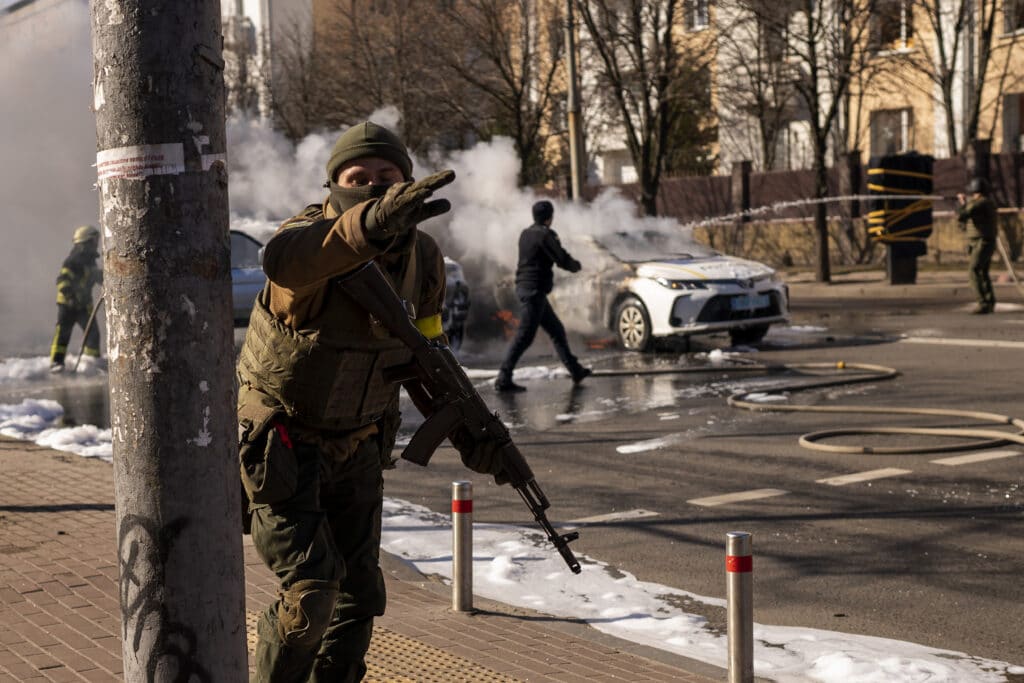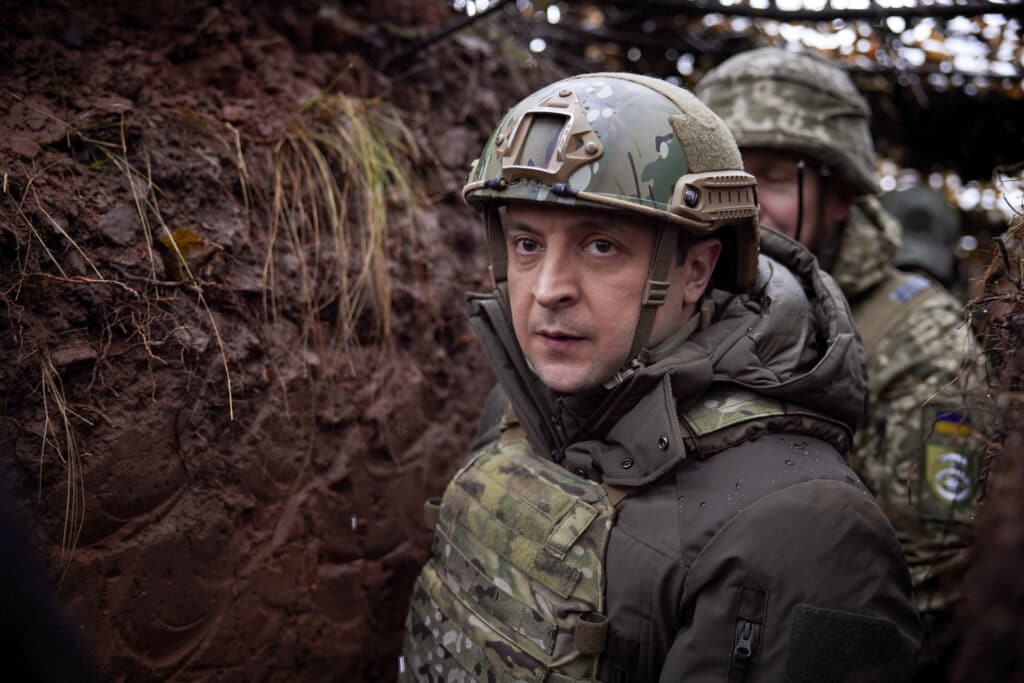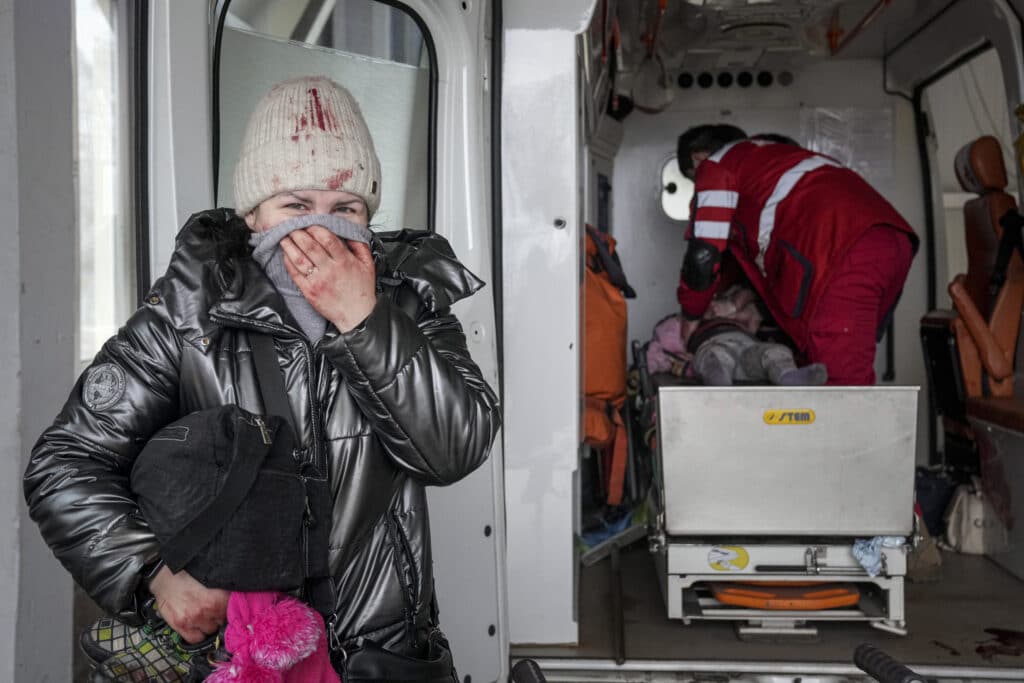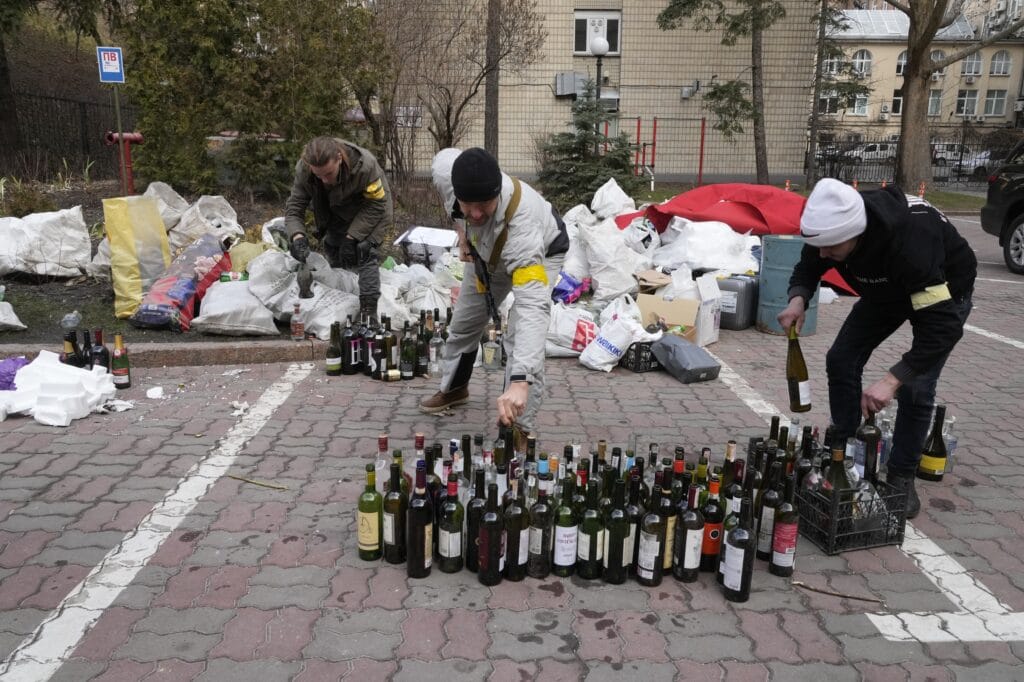Russia may seem to have the upper hand in the war against Ukraine, but the photos coming out to the rest of the world are engendering sympathy for Ukraine. Ukraine’s government has maintained an active Twitter feed, tweeting out compelling images and statements. The Associated Press has the story:
The power of war’s imagery will likely never be underestimated in the future
NEW YORK (AP) — For people outside Ukraine, the conflict with Russia is experienced almost solely through the media. In that theater, it hasn’t been close.
Virtually all of the war’s indelible images — the defiant guards on Snake Island, a woman’s chilling offer of sunflower seeds to a Russian soldier, Ukrainian President Volodymyr Zelenskyy saying he wants ammunition instead of a ride — have served to rally the world to his country’s side.
Ukraine may ultimately be overcome by sheer military might, but the power of war’s imagery will likely never be underestimated in the future.
News coverage has emphasized a David vs. Goliath theme, capturing both the fortitude and suffering of Ukrainians, and the country’s leaders have skillfully provided material to advance the narrative.
“They seem to recognize that this is a war of images as much as a ground war,” said Kenneth Osgood, a professor of history and an expert on propaganda and intelligence at the Colorado School of Mines. “Because without support, as a military reality, Ukraine doesn’t stand a chance. As a political reality, it absolutely does.”

Few moments captured the imagination quite like the answer offered by Ukrainian soldiers stationed on Snake Island in the Black Sea, when those on a Russian warship told them to surrender or face a bombing.
“Russian warship,” the answer came back, “go (expletive) yourself.”
The Ukrainian Navy later said those soldiers, thought initially to have been killed in the ensuing bombing, survived but were captured.
“It was as brave and courageous and in-your-face as it could possibly be,” said Marty Kaplan, professor at the Annenberg School for Communication & Journalism at the University of Southern California. “That’s what the world was seeing. They were speaking on our behalf to the Russians.”
News reports have been filled with stories of ordinary Ukrainians taking up arms, despite advancing age or inexperience. Citizens have worked together to fill boxes of Molotov cocktails to use against the advancing enemy.
Pictures of defiance were also common, like citizens in Chernihiv photographed standing in the road to block Russian tanks. In one widely spread video clip, an angry woman verbally confronts a Russian soldier, ultimately offering to “put sunflower seeds in your pocket so they grow when you die.”
In some cases, Ukrainians have humanized Russian soldiers in a way that divorces them from the faceless juggernaut, instead making them seem like vulnerable pawns themselves. In one posted video, a captured soldier phones home to his mother. Ukraine’s ambassador to the United Nations read aloud the plaintive last text messages one Russian soldier sent home before he was killed.

Ukraine’s government has maintained an active Twitter feed. It posted a map showing the comparative sizes of Russia and Ukraine with the message, “realize the scale of Ukrainian heroism” and urged followers to “tag @Russia and tell them what you think of them.”
On Tuesday, it retweeted a photo of author Stephen King wearing a shirt saying “I Stand with Ukraine,” adding the message “we will prevail over those langoliers for you, sir,” a reference to one of King’s creations.
The Ukrainians have also stressed civilian casualties to emphasize the point that real people are suffering, despite Russian claims of seeking military targets. Pictures have emerged of unexploded bombs landing near a playground, or in front of a grocery store.
Reporters have found plenty of examples on their own. A story by The Associated Press depicted doctors in the port city of Mariupol fruitlessly trying to save a 6-year-old girl injured in Russian shelling.
As he tried to help save her, a doctor looked at the camera of a video journalist and said, “Show this to Putin.”
In a report that emphasized a victory for Ukraine, CNN’s Matthew Chance on Tuesday walked by a column of Russian military vehicles blown up by Ukrainian missiles, some still smoldering. He spotted an unexploded grenade on the ground and carefully walked away.
It was memorable television, yet its meaning was unclear. Was this just a random sign of military success or something more?
For the Ukrainians, Zelenskyy has been a tireless advocate, appearing with countrymen and on near-constant video addresses. Turning down an offer to escape the country and instead pleading for help made him a hero to many watching.

By video, he gave a speech Tuesday to the European Parliament, his translator at one point fighting off sobs.
After Zelenskyy received a standing ovation, MSNBC’s Willie Geist said, “the Churchill comparisons are exhausted at this point.”
“Zelenskyy and his team have been really clever for calling things what they are,” Osgood said. “They’re giving his message of ‘we’re standing alone against the giant’ with a refreshing kind of bluntness — and a hint of defiant desperation.”
The story being told through the imagery is more than superficial. It has almost certainly galvanized support for Ukraine elsewhere and provided momentum for military aid, sanctions and other economic repercussions to Russian interests that would not have otherwise happened, said Philip Seib, author of last year’s “Information at War: Journalism, Disinformation and Modern Warfare.”
In contrast to Zelenskyy, Russian leader Vladimir Putin has given speeches that have led to whispers about his mental capacity, and literally appears isolated by being seen at huge tables far away from any aides.
The Russian story — a brutal invasion of a neighboring country for reasons unclear — is a hard sell to begin with. But the Russians have shown a Soviet-era incompetence that contrasts with their recently displayed adeptness in information warfare, Osgood said.
“This is part of their overall strategy,” Seib said. “What they did not consider is that there are so many other voices out there.”
The momentum created has also led to other negative impacts for the Russians, including restrictions placed on social media distribution of their state-controlled media outlets.
Despite successes for the Ukrainians, many news outlets have been careful to note that dark days still lie ahead.
“This is genuinely suspenseful,” Kaplan said. “We don’t know what is going to come next. It could end up in horror. Or it could end up being the triumph of the human spirit.”
By DAVID BAUDER







